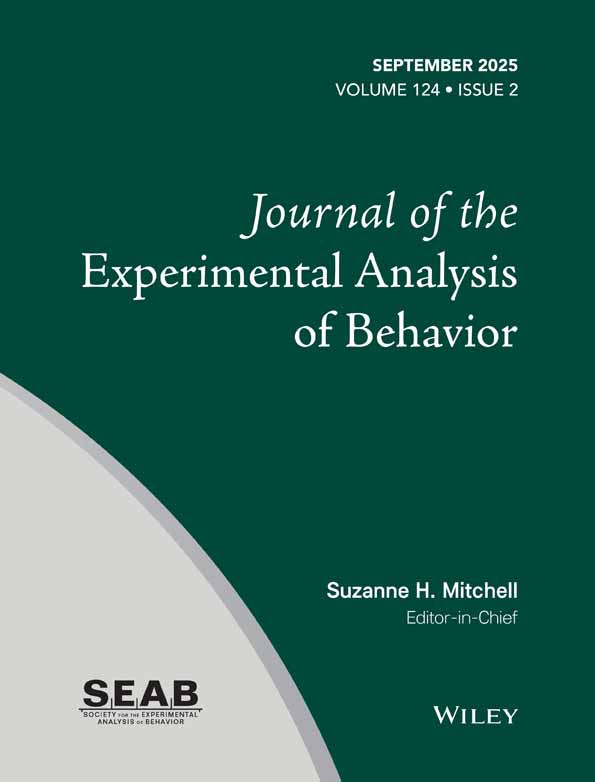ON THE DEVELOPMENT OF STIMULUS CONTROL1
This research was supported by United States Public Health Service Grant MH 13955.
Abstract
Pigeons were trained to peck one key when presented with white noise at any of five intensities lower than a reference intensity, and to peck another key when presented with white noise at any of five intensities greater than the reference intensity. The shape of the stimulus control curves (proportion of responses to one key versus stimulus intensity) changed from a horizontal line at the beginning of training to the sigmoid form of typical psychometric functions at the end of training. The development of stimulus control is described in terms of a model based on the theory of signal recognition and a concept of attention.




